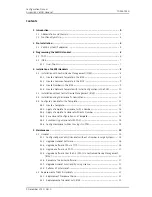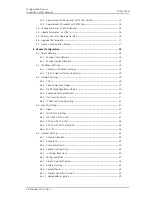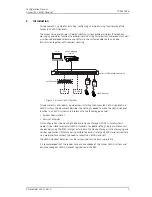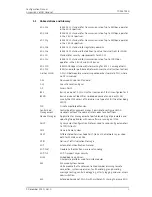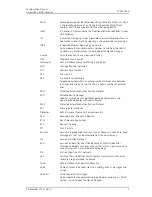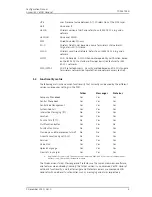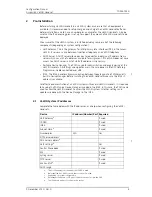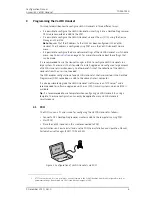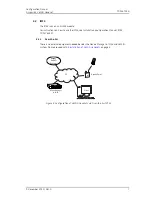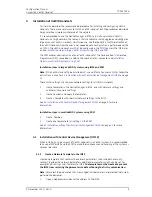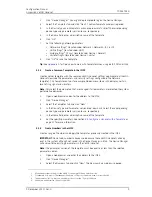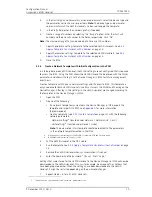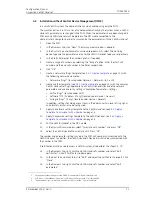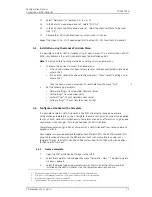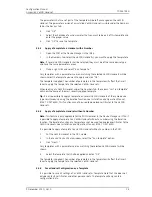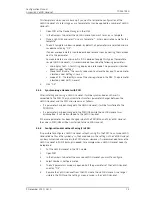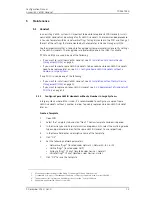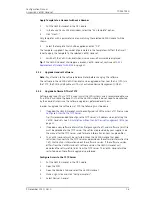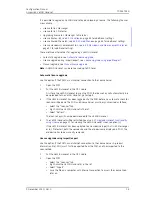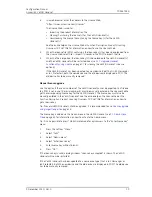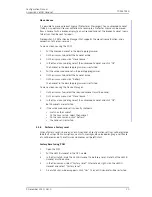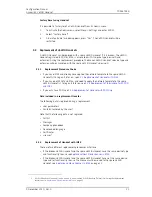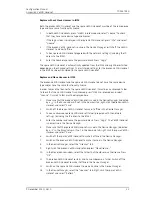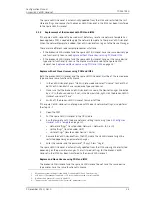
TD 92675EN
9 December 2011/ Ver. D
Configuration Manual
Ascom i62 VoWiFi Handset
8
4
Installation of VoWiFi Handsets
This section describes the recommended procedure for installing and configuring VoWiFi
Handsets. There are several ways to install a VoWiFi Handset, but the procedures described
here guarantees simple maintenance of the network.
It is recommended to use the Device Manager in IMS3 to install and maintain VoWiFi
Handsets in a large network. The reason is that it enables to install, upgrade and configure a
large amount of VoWiFi Handsets simultaneously. Another benefit is that the collection of
the VoWiFi Handsets from the user is not needed due to configuration is performed over the
air (OTA). The VoWiFi Handset must first be configured in the PDM to access the IMS3 later
on. See
Installation steps in large VoWiFi Systems using IMS3 and PDM
.
The PDM enables administration of one VoWiFi Handset at the time inserted in a Desktop
Programmer (DP1) connected via USB to the administrator’s computer. See
Installation
steps in small VoWiFi Systems using PDM
.
Installation steps in large VoWiFi Systems using IMS3 and PDM
Note:
If the VoWiFi Handset to be installed must use certificate to access a WLAN, follow the
instructions in chapter
4.2 Installation without Central Device Management (IMS3)
on page
11.
These WLAN settings are common network settings for all VoWiFi Handsets.
1
Create templates in the Device Manager in IMS3; one with network settings and
another with common settings.
2
Create Numbers and apply the templates.
3
Create a template with identical network settings in the PDM.
See
4.1 Installation with Central Device Management (IMS3)
on page 8 for more
information.
Installation steps in small VoWiFi Systems using PDM
1
Create Numbers.
2
Create one template for all settings in the PDM.
See
4.2 Installation without Central Device Management (IMS3)
on page 11 for more
information.
4.1
Installation with Central Device Management (IMS3)
When installing a large amount of VoWiFi Handsets in a VoWiFi system, it is recommended
to have both the IMS3 and the PDM to make the maintenance and handling of the system as
simple as possible.
4.1.1
Create a Network Template in the IMS3
Create one template that contains the network parameters (also include the security
settings). Besides the network parameters, additional parameters might also be set, for
example VoIP settings and IP address to IMS3.
The template must be created to prevent
the IMS3 from restoring the parameters to default during the first synchronization.
Note:
Only select the parameters that are changed, if all parameters are selected the system
performance decreases.
1
Open a webbrowser and enter the address to the IMS3.


